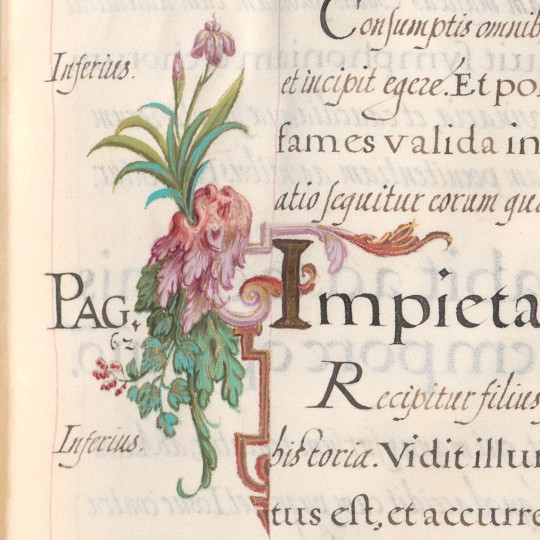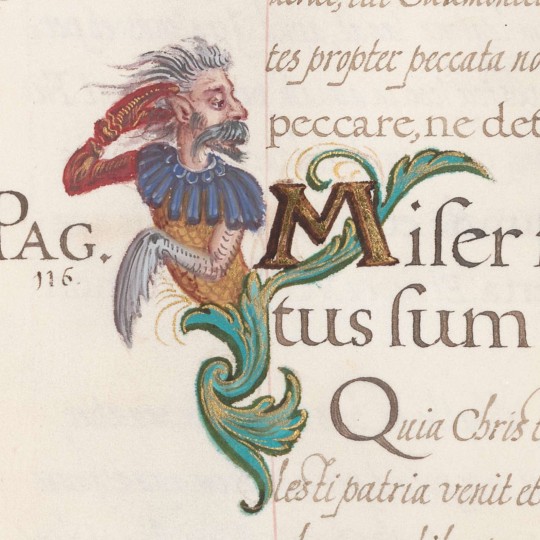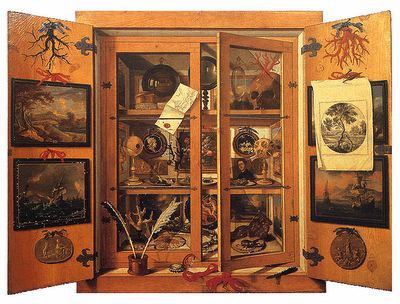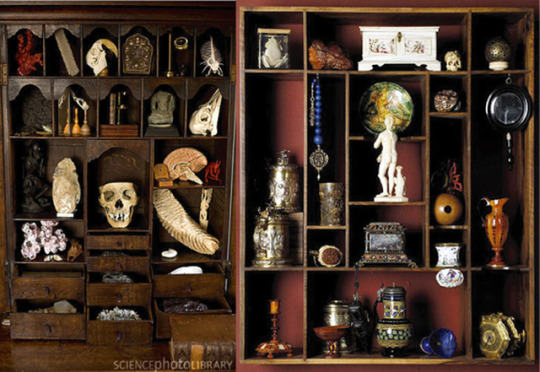#Samuel Quiccheberg
Text




uniquely decorated initials
in a latin manuscript by Samuel Quiccheberg, munich, 1565
source: Munich, BSB, Mus.ms. A I(2, fol. 40v, fol. 32r, fol. 46v and fol. 56v
#aren't they pretty :')#16th century#renaissance art#illuminated manuscript#illumination#initials#hybrid creatures#Samuel Quiccheberg#manuscript decoration
880 notes
·
View notes
Text
tagged by @jonathanssweatercollection (thank you!!)
lockscreen:

i can't get the clock to not be over her face unfortunately but yeah i got a compliment on it the other day <3 the album came out today but i haven't had time to listen to it yet :(
last song listened to:
joni my beloved <3 also i'm an apple music user so rip to spotify users who can't listen to joni i would literally not be able to live without her
last picture:

it's a picture of a page in a library book that i have to return but still need for my dissertation!! veeeery exciting :) enjoy this excerpt of samuel quiccheberg's seminal 1565 work inscriptiones vel tituli theatri amplissimi <3
tagging @frankensteintrans @roombagreyjoy @frasiercraneshumongousasscontest @hardoncaulfield if they want to!
5 notes
·
View notes
Text

"Bereits seit der Renaissance wurden Museen oftmals auch als „gespiegelte Theater“ bezeichnet. Eines der berühmtesten Beispiele ist das „Gedächtnistheater“ von Giulio Camillo im 16. Jahrhundert. Seine Inszenierungen dienten als Inspiration für das erste museumstheoretische Traktat der Geschichte (Samuel Quiccheberg: Inscriptiones vel Tituli Theatri Amplissimi, 1565). Am besten stellt man sich das „Gedächtnistheater“ als eine Art Amphitheater vor.
Auf dessen Rängen präsentierte Camillo viele unterschiedliche Bilder als universalen Wissensspeicher. Dadurch wird die Kommunikationsstruktur des Theaters gespiegelt: Im Mittelpunkt der Kunstrezeption stehen die Zuschauer*innen selbst auf der Bühne und wählen frei aus, welche Exponate sie betrachten möchten. Die Ausstellung wird als Spielraum betrachtet, in dem die Besucher*innen einen eigenen Weg durch die Ausstellungsdramaturgie verfolgen."
Sandra Knocke #museumpics, Fotografieren im Museum. GNM_Blog
0 notes
Quote
solely from these images it appears possible to acquire knowledge of many subjects, for the observation of a single image makes a greater impression in the mind than the daily reading of many pages [of text].
Samuel Quiccheberg, Inscriptiones (1565), E4r-E4v: Digressions, On the Fifth Class, Images Stamped from Copper: for Inscription 3, quoted in Jansen 2019, 132
0 notes
Photo







CABINET OF CURIOSITY (WUNDERKAMMERN)
Wunderkammern first began to appear in the homes of royalty and the aristocratic in 16th century Europe. They were soon dubbed “wunderkammern,” or, “wonders or miracles of the world,” and were intended to summarize the world to the very corners of the Earth. Another name for such collections was “vernunfft-kammer,” or, “room of reason.” Guides and manuals instructing collectors on proper preservation and display techniques began to appear in the second half of the 16th century. Samuel Van Quiccheberg, a Flemish doctor and curator for the ducal art collection in Munich, published the first known manual in 1565. His book, entitled “Inscriptiones vel tituli theatri amplissimi” defined the ideal wunderkammer as having five main sections. According to Quiccheberg, a complete collection consisted of objects dealing with genealogy, handicrafts dating from the antiquity to the present, natural specimens, technical and cultural objects, and a gallery that included paintings, drawings, and engravings. Finally, Quiccheberg stressed the importance of a collection acting also as a library, workshop and apothecary. Collecting was seen as beneficial in both an intellectual and a social sense; these repositories of knowledge both answered questions and piqued scientific curiosity. Additionally, showing one’s own cabinet was an excellent display of wealth and social prestige. The most impressive collections attracted visitors from all over Europe, which occasionally included royalty.
0 notes
Text




some more funky initials
in an illuminated latin manuscript, munich, 1565
source: Munich, BSB, Mus.ms. A I(2
312 notes
·
View notes